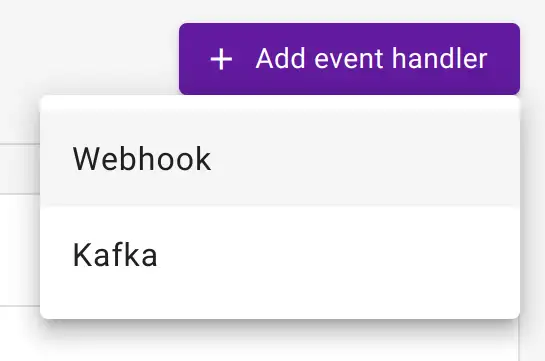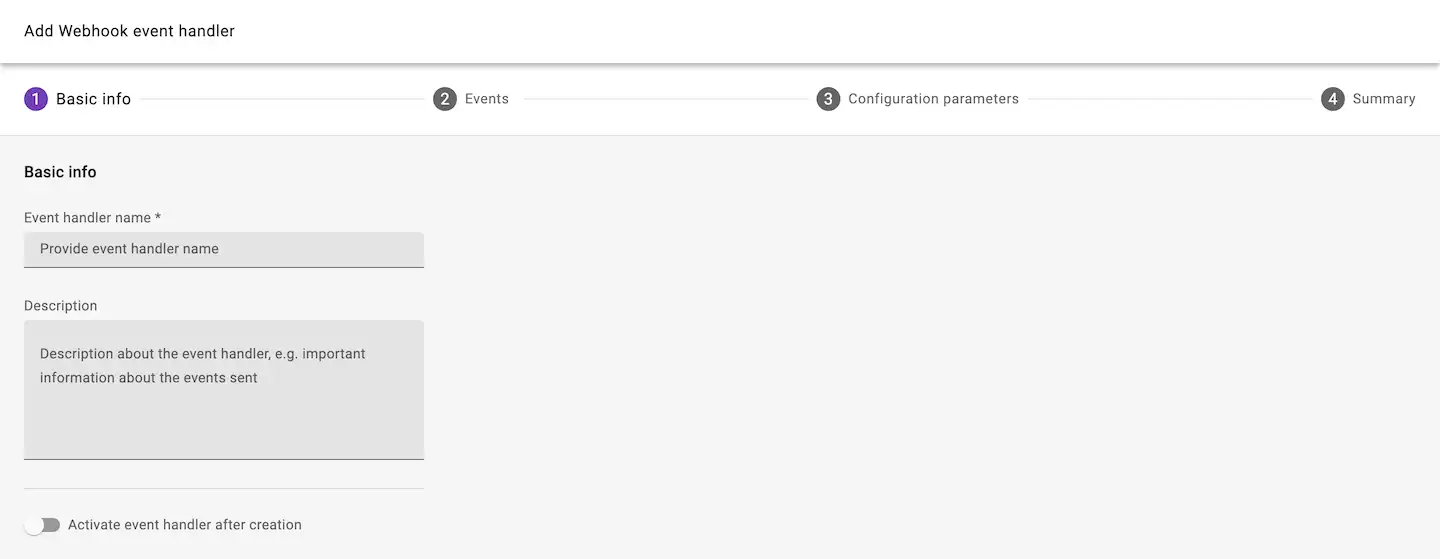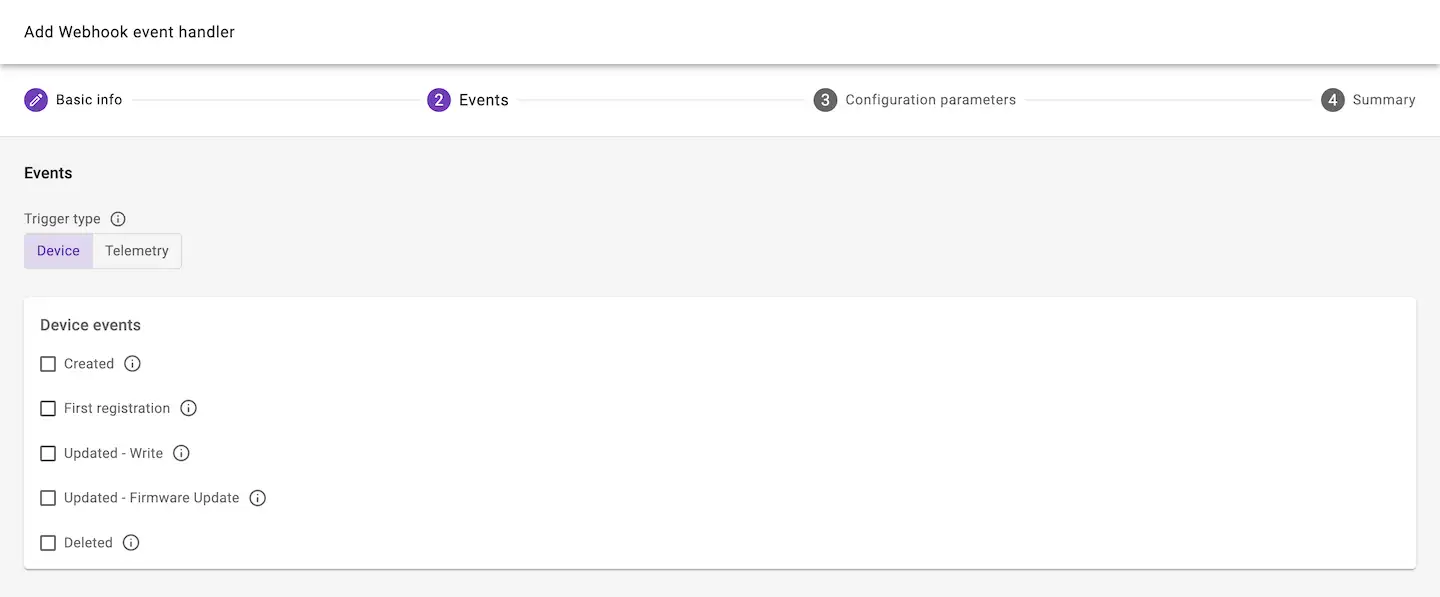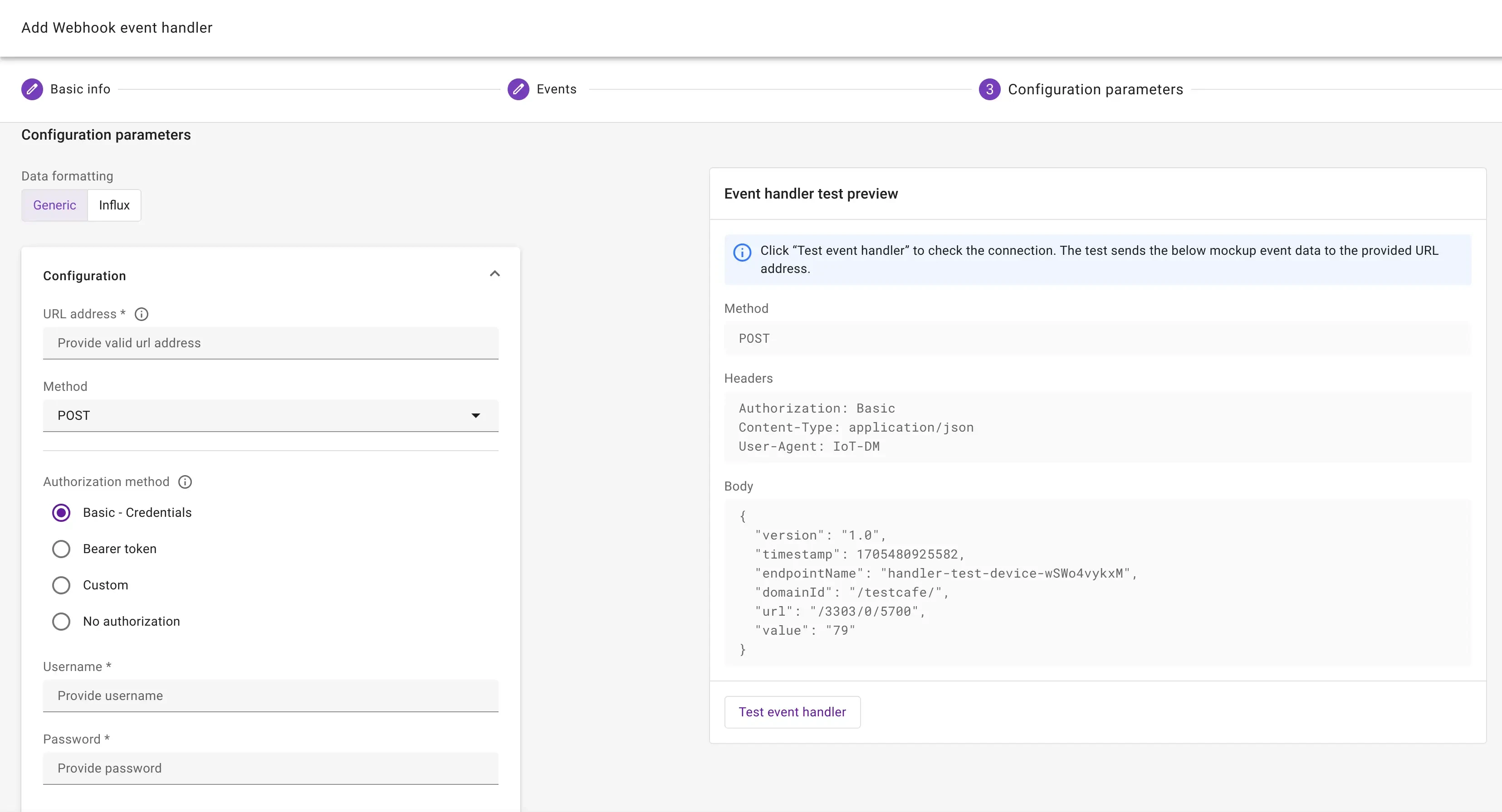Webhooks#
The webhook event handler delivers HTTP(S) requests to public endpoints. Webhooks contain lifecycle events and/or telemetry data which can be delivered to web applications, IoT platforms, API gateways or hyperscaler lambda functions.
Prerequisites#
- A user with access to the Coiote IoT Device Management platform and appropriate permissions
- A LwM2M device
Info
You can create up to 10 event handlers in your domain.
Create a webhook#
To create a new webhook event handler, select: Integrations > Data Integration Center.

Click Add event handler and select Webhook.

Provide basic information such as the name and description
Info
You can activate the event handler after creation.

Select the events which trigger the HTTP(S) requests.
Event types
Device events include:
- Device created
- First registration
- Coiote IoT DM writes a value to a device
- Device successfully executes a firmware update
- Device deleted
Telemetry events include data which is generated by the device. Events can originate from objects, object instance, resources or resource instances.

Configure webhook parameters#
Webhook parameters include:
- URL address
- Method:
POST,PATCHorPUT - Authorization method, optionally adding a Username and Password or Bearer token
- Optional custom headers
To validate the webhook parameters, you can test the event handler before creating the event handler.

Influx and Datacake
For instructions on integrating data with Influx, visit the InfluxDB guide. To see how to integrate with Datacake, see the Datacake guide.

To create the event handler, click Next step and Add event handler.

Warning
An event handler is automatically deactivated after several consecutive failed attempts. You have to manually reactivate the event handler to continue using the data integration.